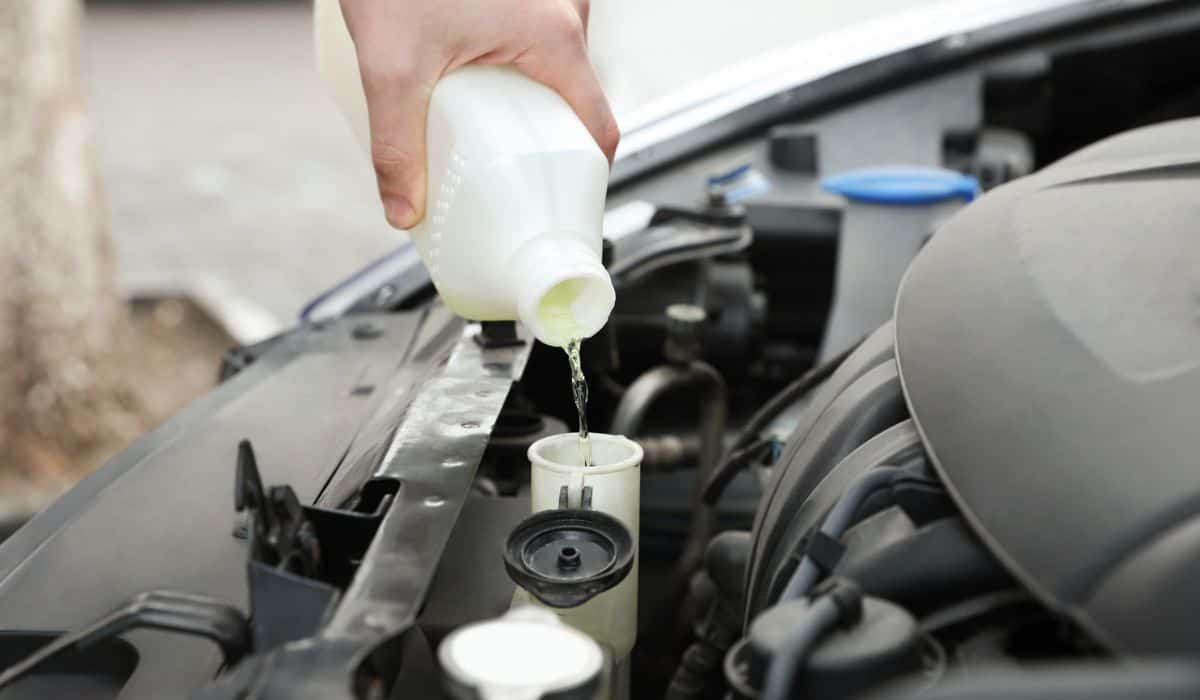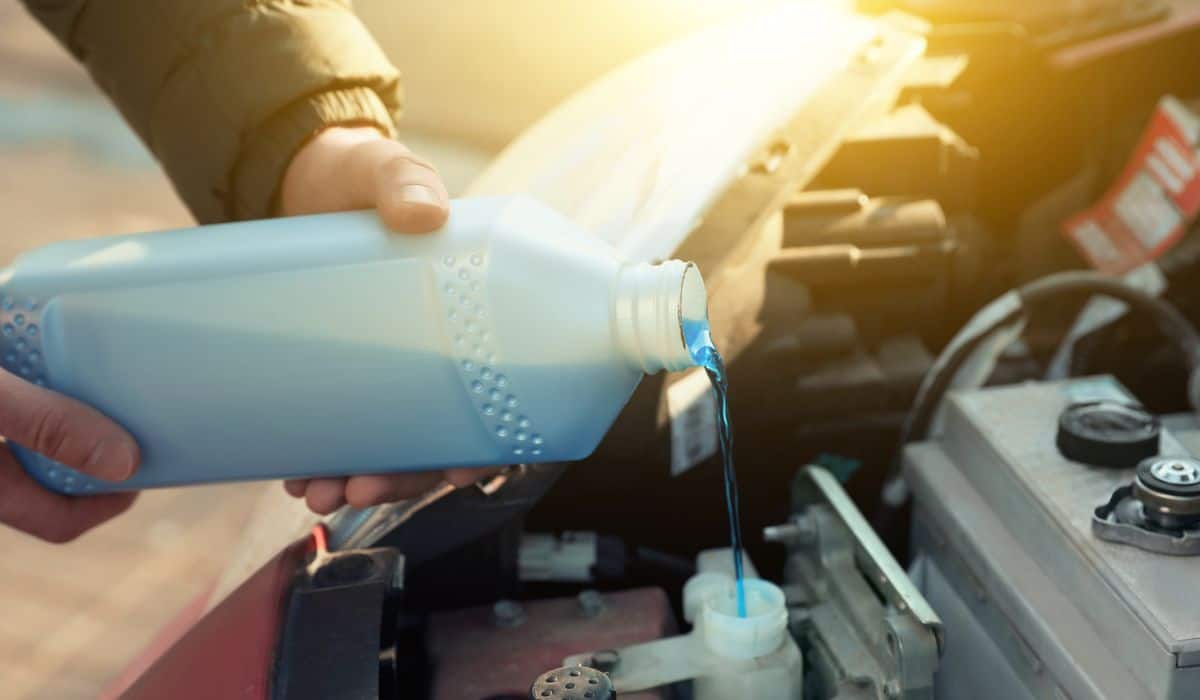How Many Gallons Of Antifreeze Does A Car Radiator Hold?
Coolant or antifreeze is an essential part of preventing vehicles from overheating. But how many gallons of antifreeze can your car’s engine hold, and how often do you need to refill it?
Most car radiators can hold between 3 and 5 gallons of antifreeze, but this amount depends on the radiator’s size, the type of engine, and the type of coolant used. It’s best to flush and fill your coolant approximately every two years, or every 30,000 miles.
Let’s take a closer look at how many gallons of antifreeze most car radiators can hold, how often to replace the antifreeze, and the correct way to top off the radiator coolant.
How Many Gallons of Antifreeze Does a Car Radiator Hold?

A normal radiator can hold between 3 and 5 gallons of antifreeze on average, mixed with water. However, this capacity may vary for different cars based on their engine type and size.
For example, small engines generate less heat, so they have a smaller coolant system to maintain the temperature, and it requires fewer gallons of antifreeze.
The type of coolant system in your car may also affect how much coolant it requires. Different automobile coolant systems use different types of antifreeze, rust inhibitors, or fuel additives to enhance engine performance.
Most experts suggest keeping the antifreeze up to the “Max” level so that it can effectively keep maintaining temperature levels inside the engine system, improving engine performance and fuel efficiency in the process.
When an antifreeze tank is under-filled, it can cause engine problems like overheating or freezing. At the same time, if the tank is overfilled, it can lead to electrical system damage in your car. So, it’s important to maintain an optimum level of antifreeze in your car radiator to improve engine efficiency.
An antifreeze coolant is also important to prevent the engine and other parts of the combustion system from rust or corrosion, as it typically contains anti-toxin chemicals that absorb excess moisture and don’t allow rust buildups.
Always make sure to use a compatible antifreeze for your car radiator, or else it may result in various engine problems like idling, stalling, or engine misfires. You should visit a professional to inspect your car and help you choose the right antifreeze for it.
How to Top Off Your Radiator’s Coolant
If your car radiator still has coolant in it, you only need to top off your radiator’s coolant. Use the brand of coolant that you used last time, as mixing coolants can be harmful.
Here is how you can do it correctly:
Check Your Radiator’s Coolant Level
The first step is to check the radiator’s coolant level, so that you can determine how much antifreeze you’ll need to fill. This prevents you from overfilling or under-filling, making sure your engine performs well.
This process is very simple. You only need to be careful not to touch the combustion tank when you’re trying to open the radiator’s hood because it’s usually burning hot.
Once the hood is safely open, check for the antifreeze level remaining in the coolant container. Coolant containers are usually made from durable plastic, which is commonly placed at the upper right-hand side of your car’s engine.
It usually has “Max” and “Min” marks carved on it. Check if the level is below the “Max” mark, since most experts suggest filling the antifreeze when its level drops down from “Max.”
Most modern cars also have sensors attached to the coolant containers, which indicate to the driver when the antifreeze level drops too low.
Adding More Coolant
Follow these steps to correctly add antifreeze to your car’s radiator:
- Choose the right coolant: Visit a professional or read the manufacturer’s guide to know which coolant is compatible with your engine combustion system.
- Let your car cool down: The combustion chamber typically has a high-temperature level that can cause harm when you accidentally touch it.
- Mix it with water: Pure antifreeze sometimes doesn’t perform well, so follow the instructions on the product tag to mix it with water.
- Remove the container cap and add coolant: Carefully remove the container cap and add the coolant until it reaches the “Max” mark on the container.
How Often Should You Change Your Antifreeze/Coolant?

Some experts suggest that you only need to change your antifreeze every 100,000 miles. However, if you want to be on the safe side, you can change your antifreeze every 30,000 miles, or every two years.
That said, how often you should change your antifreeze may vary depending on the type of antifreeze, the type of car engine, and the driving conditions.
The recommended way to change your antifreeze is known as “flush and fill.” During this process, you’ll need to empty the coolant container by flushing out the contaminated liquid it contains. Radiator flushes can cause problems if you’re not careful, so it’s important to use the correct technique.
Then, wash the container with abrasive solvents to remove possible dust and debris particles, or other toxic chemical buildups. Finally, you’ll have to refill the container with a new antifreeze of your choice.
In this case, you don’t need to use the same antifreeze brand that you used last time, so always consult a professional to suggest the right antifreeze for you.
